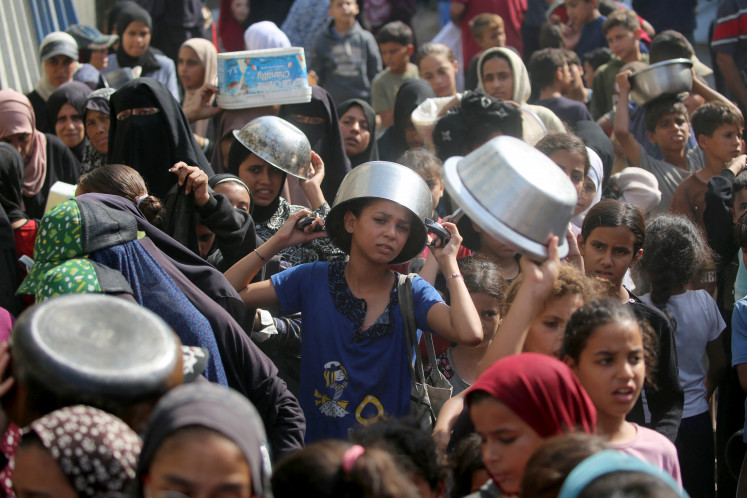Popular Reads
Top Results
Can't find what you're looking for?
View all search resultsPopular Reads
Top Results
Can't find what you're looking for?
View all search resultsLower rice output seen this year and next: BPS
Indonesia is bracing for a lower output of rice, its main crop, this year: an early challenge to President Joko âJokowiâ Widodoâs plan for self-sufficiency within the next three to four years
Change text size
Gift Premium Articles
to Anyone
I
ndonesia is bracing for a lower output of rice, its main crop, this year: an early challenge to President Joko 'Jokowi' Widodo's plan for self-sufficiency within the next three to four years.
Domestic rice production, as measured by the output of unhusked paddy rice, will decrease by 0.94 percent, or equal to 670,000 tons this year from last year, as harvest areas shrink because of drought in several production centers, as well as floods in others, the Central Statistics Agency (BPS) reported Monday.
'A relatively big decline in rice output may happen in Central Java, West Java, South Sumatra, North Sumatra and West Nusa Tenggara (NTB).' BPS chief Suryamin told reporters in a press conference.
The figure is an improvement from the 1.98 percent slide predicted by the agency in July because of a feared El Niño phenomenon that would have brought severe drought to the sprawling archipelago of more than 17,000 islands. The extreme weather conditions did not happen.
The lower output was caused by a loss of 66,930 hectares of harvest area, or a 0.48 percent dip, amid unfavorable weather and a 0.47 percent slide in productivity that translated into a loss of 24 kilograms per hectare, the agency said.
The agriculture ministry's acting director general for food crops, Haryono, said that the potential decline in rice output was not alarming and the situation was still in line with expectations.
The government has priced in a potential for lower output caused by a reduction in producing farmland, particularly as the planting season began very early late last year.
'Based on our surveillance of standing crops from May to September and from September to December, we believe that the realized rice production for the whole year will likely pick up,' he told reporters after the conference.
Lower rice production could lead to higher prices, which is always a key concern in Indonesia, the world's fourth most populous nation with nearly 250 million people for whom rice is a staple food.
Rice prices have been manageable, with rice only contributing to 0.03 percent of October's 0.47 percent inflation rate.
Asked whether the government would need to import to maintain competitive prices against the backdrop of an expected lower rice output, Haryono said that rice imports would only be necessary when there was an urgency for them.
'In the era of climate change, who can guarantee availability of stocks? We only have stockpiles that can suffice for three months,' he said.
However, with the new government under Jokowi imports seem to be unlikely as he has promised food sovereignty.
On the day of his installment, Agriculture Minister Amran Sulaiman vowed to boost production of staple foods, including rice, corn and soybean, in the next three to four years, to stop imports.
The measures would include the revitalization of irrigation infrastructure, mechanization of agriculture, expansion of planting areas and introduction of an agricultural insurance program for farmers.
Meanwhile, in contrast with rice, the agency predicted that production of two other key crops ' corn and soybeans ' would likely rise by 3.33 percent to 19.13 million tons and 18.12 percent to 921,340 tons respectively.
Apart from benefits derived from enhanced productivity, behind those increases were a 1.54 percent expansion of harvest areas for corn to 58,720 hectares and a 11.08 percent expansion of harvest areas for soybeans to 61,010 hectares.










